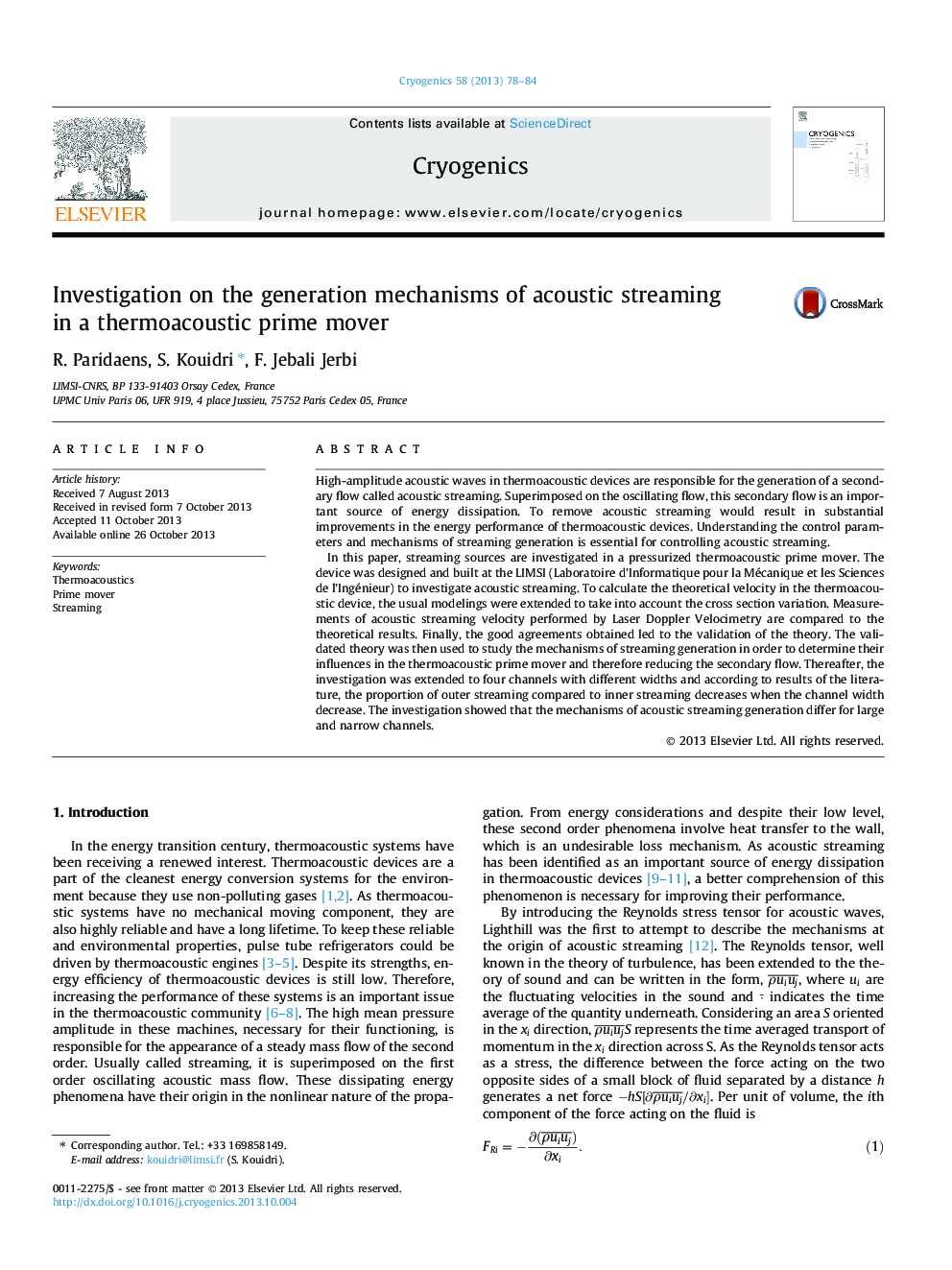| Article ID | Journal | Published Year | Pages | File Type |
|---|---|---|---|---|
| 1507522 | Cryogenics | 2013 | 7 Pages |
•A second order velocity has been measured in a pressurised thermoacoustic prime mover using LDV techniques.•The physical mechanisms of streaming generation were investigated with quantitative manner.•An analytical model to calculate acoustic streaming was extended to take into account the section variation.•The proportion of inner streaming is increasing when the channel width is decreasing.•Three phenomena causing the acoustic streaming have been identified and investigated.
High-amplitude acoustic waves in thermoacoustic devices are responsible for the generation of a secondary flow called acoustic streaming. Superimposed on the oscillating flow, this secondary flow is an important source of energy dissipation. To remove acoustic streaming would result in substantial improvements in the energy performance of thermoacoustic devices. Understanding the control parameters and mechanisms of streaming generation is essential for controlling acoustic streaming.In this paper, streaming sources are investigated in a pressurized thermoacoustic prime mover. The device was designed and built at the LIMSI (Laboratoire d’Informatique pour la Mécanique et les Sciences de l’Ingénieur) to investigate acoustic streaming. To calculate the theoretical velocity in the thermoacoustic device, the usual modelings were extended to take into account the cross section variation. Measurements of acoustic streaming velocity performed by Laser Doppler Velocimetry are compared to the theoretical results. Finally, the good agreements obtained led to the validation of the theory. The validated theory was then used to study the mechanisms of streaming generation in order to determine their influences in the thermoacoustic prime mover and therefore reducing the secondary flow. Thereafter, the investigation was extended to four channels with different widths and according to results of the literature, the proportion of outer streaming compared to inner streaming decreases when the channel width decrease. The investigation showed that the mechanisms of acoustic streaming generation differ for large and narrow channels.
